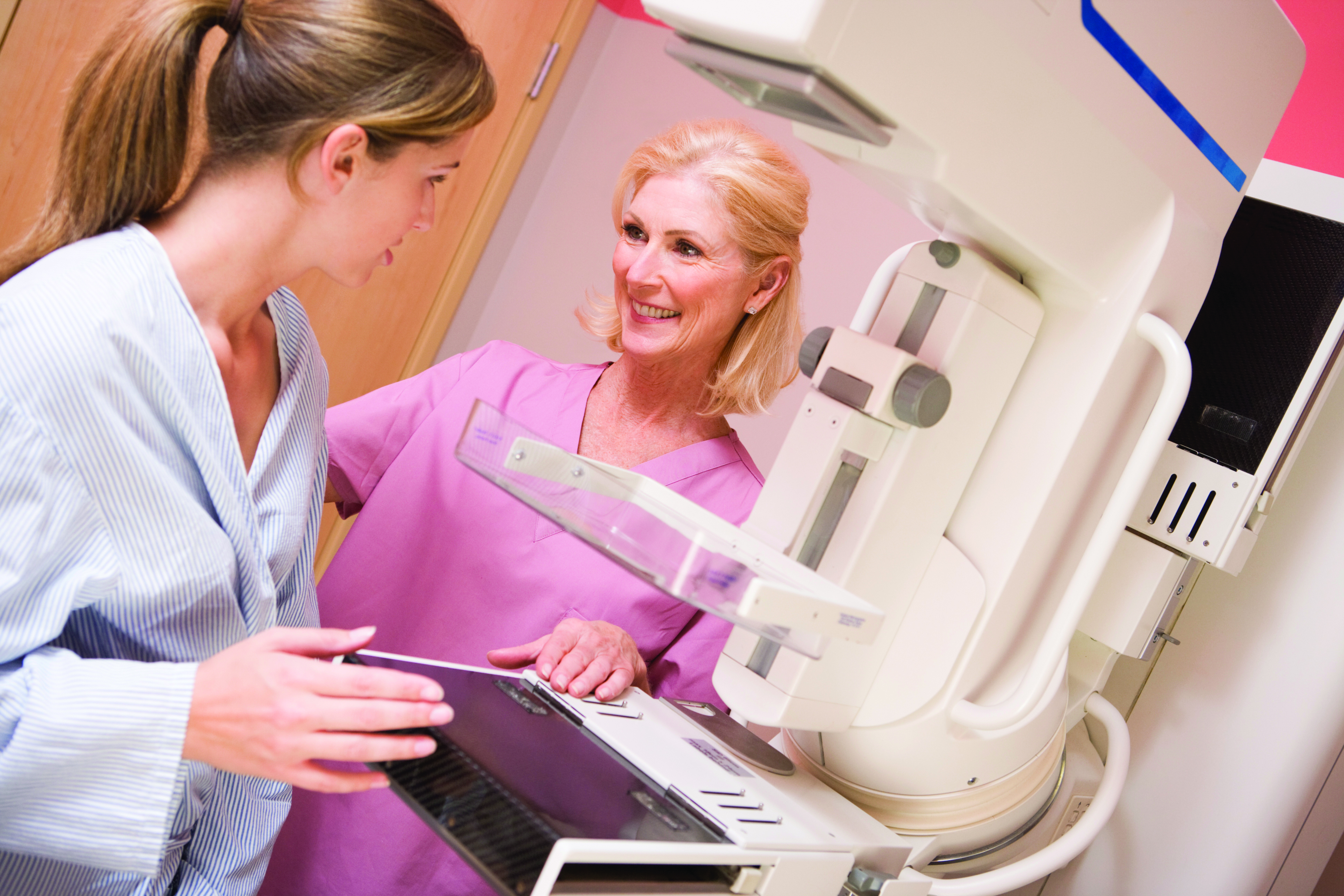For many women, their first mammogram can be a dreaded event. It is one exam women typically postpone due to many misconceptions about the procedure. The most common one is the expectation of pain. The majority of women who come for their first mammogram expecting the worst usually leave pleasantly surprised. ͞It wasn’t that bad͟ is a common phrase heard by mammographer.
Another common concern is radiation exposure. Mammograms are very safe. Radiation levels are lower than in the past due to advanced technology and produce exposure similar to that of a cross-country airplane flight.
During your exam, the mammographer will first gather medical history that provides valuable information for the radiologist interpreting the images. Images are obtained using a paddle device that compresses the breast tissue to a tolerable position. This may be mildly uncomfortable, but lasts only a few seconds. Holding the same position carefully will allow the tech to get the best images possible. The images are then technologically checked for quality and provided to the radiologist to read.
Statistics show that 1 in 8 women will be diagnosed with breast cancer during her lifetime. Breast health should become a part of your routine wellness plan early on, even if you have no family history of breast cancer. Women are encouraged to perform breast self-exams beginning in their early 20s. The main purpose of this examination is for you to become familiar with your own breasts and be more likely to differentiate a new symptom from normal tissue. Your health care provider should perform clinical breast exams every three years through your 20s and 30s and annually after the age of 40.
Unless you have a family history of breast cancer, it is recommended that annual mammograms begin at age 40. Mammograms continue to be our first line of defense in the battle against breast cancer. Mammograms don’t prevent cancer, but they help to find cancer as early as possible. The goal is to detect cancer before clinical signs are noticeable, when treatment is easier and the likelihood of recovery is highest.
Nowadays, facilities have state-of-the-art equipment that offers a patient an effective and pleasant exam. In addition, facilities are making it more accessible for women to have this exam at their convenience by promoting mobile mammography, extended and weekend hours, and many no longer require a prescription for a screening mammogram. The exam is generally covered by insurance, and assistance with costs may be available for uninsured women through a number of national and local organizations.
It is imperative that every woman becomes an advocate for her breast health. Take all measures necessary to encourage early detection, including yearly mammograms. Don’t be afraid; this exam can save your life.
BIO:M. Giovanna Melian, RT (R) (M), is a clinical breast care coordinator with the Florida Hospital Cancer Institute in East Orlando.



Comments